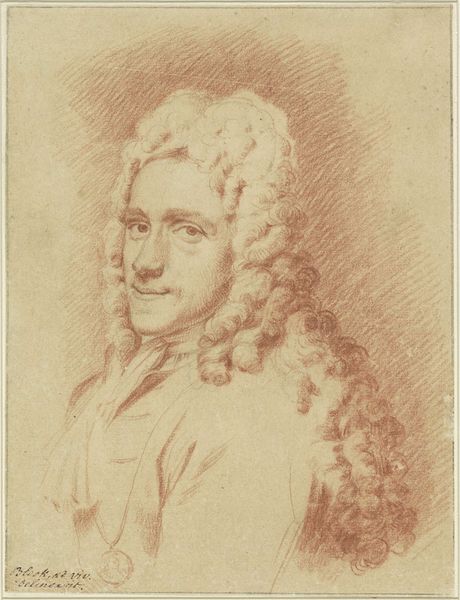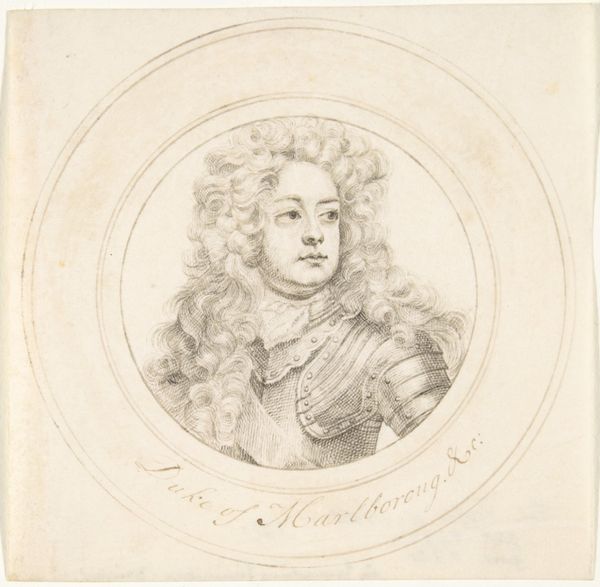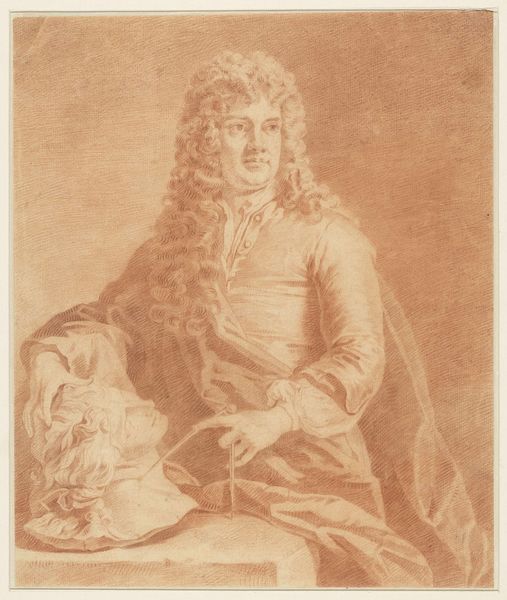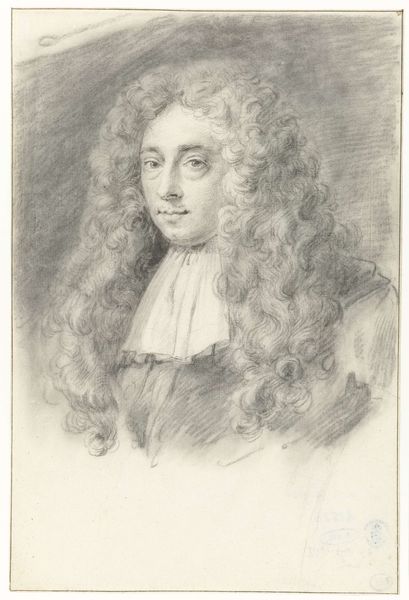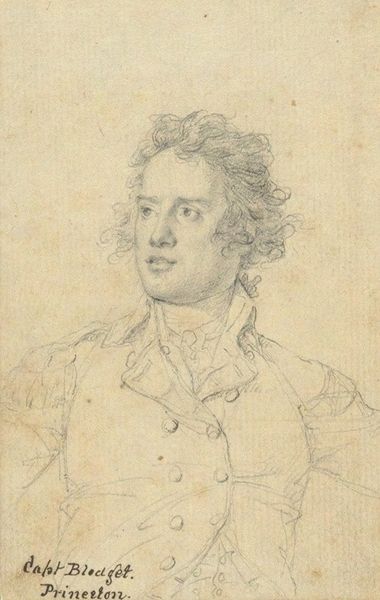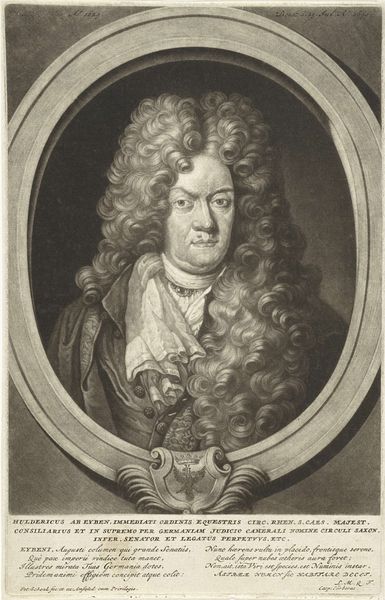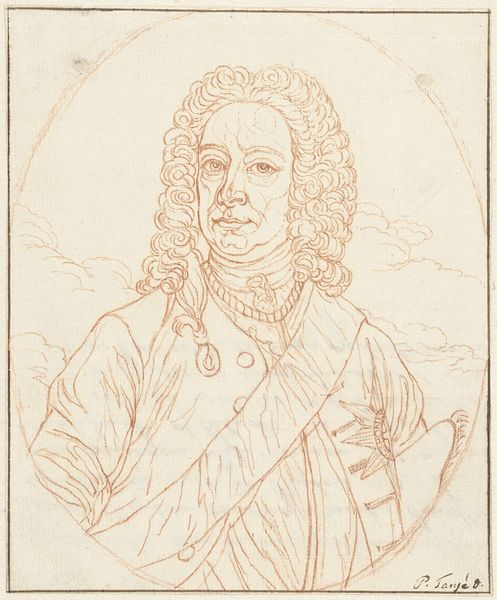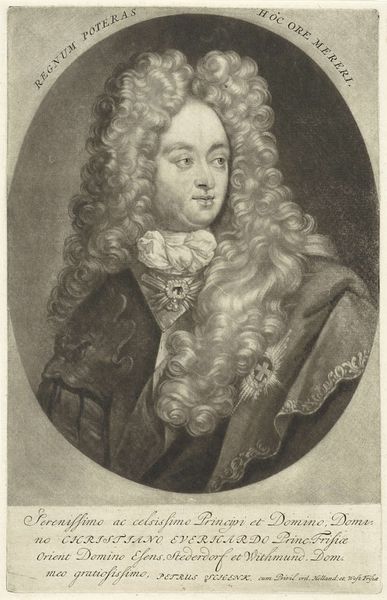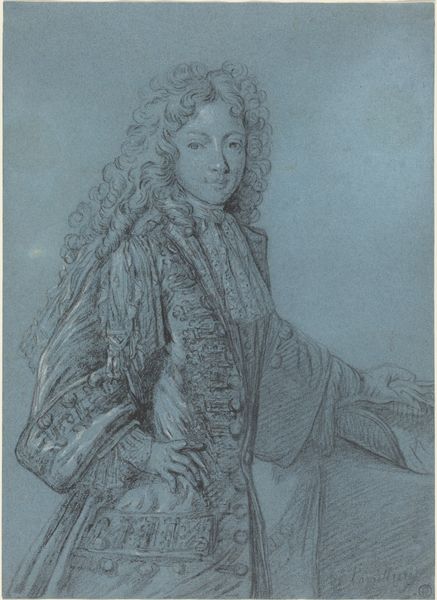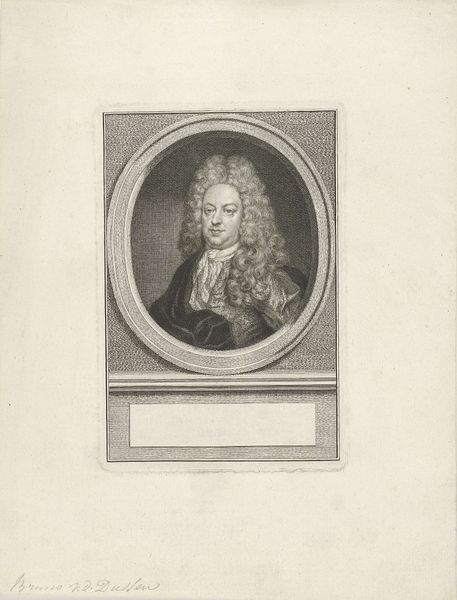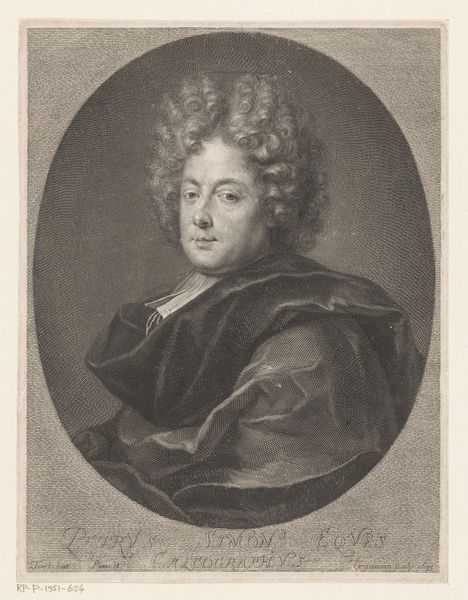
drawing, pencil
#
portrait
#
pencil drawn
#
drawing
#
pencil drawing
#
pencil
#
portrait drawing
#
academic-art
#
realism
Dimensions: height 292 mm, width 202 mm
Copyright: Rijks Museum: Open Domain
Curator: Welcome. Today, we'll be exploring "Portret van Hendrik Nassau" by Gerrit Postma, a pencil drawing dating from 1829-1894, housed here at the Rijksmuseum. Editor: It's a surprisingly light and airy drawing, considering it depicts someone who looks quite important and imposing with his heavy wig. The shading creates a soft, almost dreamlike quality. Curator: The medium lends itself to that softness. Pencil, especially in the 19th century, offered an accessibility that oil paint didn’t. Consider the sitter, Hendrik Nassau. This wasn’t just an image of nobility; it was an object available for reproduction, reflection, and circulation amongst a broader audience keen on academic art. Editor: Agreed, and yet look at the confidence of the linework. Postma skillfully models form and texture solely through tonal variations. It’s an exercise in masterful understatement, a lesson in precision and controlled contrast that really brings the portrait to life. Curator: Indeed, it showcases the artist's skill, revealing not just his technical abilities but also how those abilities catered to the expectations of his patrons and the broader art market. The attention to detail signifies the economic investment in such a piece. Pencil drawings, especially portraits, could be produced more quickly and cost-effectively than oil paintings, democratizing representation to a certain extent. Editor: From a formal perspective, I’m drawn to the artist’s use of chiaroscuro to create depth and volume. The dramatic contrast between light and shadow, particularly on the face and wig, gives the figure a three-dimensional presence, elevating it beyond a simple likeness. Curator: Think too of the paper itself. Was it a standard grade or specially made for this commission? The very texture would have impacted the application of the graphite. Also, consider the social and cultural significance of portraiture at this time. This was more than just art. It was a statement. Editor: I see that. What began as an initial study into artistic forms ends in broader thoughts of how artistic economies were being formed through singular drawings like this one.
Comments
No comments
Be the first to comment and join the conversation on the ultimate creative platform.
